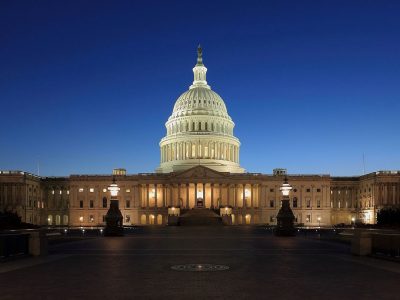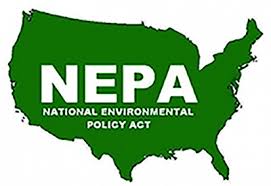NEPA
35 Major Climate Initiatives Under Biden
By any measure, it has been an eventful four years for climate policy, with billions in spending and many major regulations finalized. Here’s a timeline of the Top 30 actions.
In light of President Biden’s withdrawal from the 2024 presidential race yesterday, we thought it was appropriate to update this piece about the climate legacy of the Biden-Harris Administration. In his four years in office, Donald Trump rolled back essentially every existing federal policy to limit climate change. The picture under the Biden Administration has …
Continue reading “35 Major Climate Initiatives Under Biden”
CONTINUE READINGThe Ten Most Important U.S. Environmental Laws
Some of the choices may surprise you.
What are America’s most important environmental laws? Some are familiar, such as the federal air and water pollution laws, and the Endangered Species Act. But there are other people rarely hear about — even in environmental law courses — but have done a lot to protect the environment.
CONTINUE READINGThe 2023 NEPA Rewrite and the Supreme Court’s New Climate Case
NEPA isn’t a common law subject. What the statute says matters more than pre-2023 judicial opinions.
When it amended NEPA in 2023, Congress squarely rejected language that would have constricted the definition of environmental impacts. The Supreme Court needs to give that language full effect, not obsess about the meaning of pre-2023 judicial opinions.The Supreme Court shouldn’t give advocates of narrowing NEPA a victory that they were unable to get through the legislative process.
CONTINUE READINGTrump’s War on Environmental Protection: A Chronology
Yes, there were over 100 environmental rollbacks. Here are the biggest.
From when he took office to the day he left, Trump lead a steady drumbeat of environmental rollback after environmental rollback. His goals: eliminate limits on pollution from fossil fuels and end protection of public lands.
CONTINUE READINGNEPA in the Ninth
Can an agency just shortcut the whole process? The 9th Circuit says no.
On Wednesday, the Ninth Circuit decided a NEPA case that discusses two interesting issues. But what’s most striking isn’t what the court did discuss but what it didn’t mention : the fact that last year’s NEPA amendments speaks directly to one of those issues. Apparently the word that NEPA was extensively amended a year ago …
Continue reading “NEPA in the Ninth”
CONTINUE READINGWill the NEPA Amendments Speed Up Permitting?
Probably not much. If at all.
I’ve blogged quite a bit about the challenges of interpreting the NEPA amendments, which snuck through as part of last year’s debt ceiling bill. I haven’t said much about their impact. Given the amount of energy infrastructure we need to build in the near future, a streamlined permitting process would be great. Alas, I don’t …
Continue reading “Will the NEPA Amendments Speed Up Permitting?”
CONTINUE READINGDeciphering NEPA 2.0
Here’s everything you wanted to know about the “New NEPA” but were afraid to ask.
NEPA was long an island of legal stability, standing almost unamended for over a half century. Then in the summer of 2023, everything changed. As a rider on the agreement to raise the debt ceiling, Congress extensively rewrote and expanded NEPA, gifting us with a new statutory regime. As I’ve written before — and discuss …
Continue reading “Deciphering NEPA 2.0”
CONTINUE READINGMore Unforced Errors in the 2023 NEPA Amendments
Bluntly speaking, the statute is a mess.
When the 2023 amendments to NEPA passed as part of the debt ceiling bill, I wrote a series of blog posts about the drafting errors. It turns out that I missed some, as I discovered when working on the new edition of my environmental law casebook. They really aren’t all that subtle, and it’s hard …
Continue reading “More Unforced Errors in the 2023 NEPA Amendments”
CONTINUE READINGThe Statutory EIS Process: A Primer
Last year, Congress tried to codify NEPA law. Here’s how the process is supposed to work.
Because NEPA’s discussion of environmental impact statements (EIS) was very brief, the requirements and procedures were elaborated by courts and guidance from a White House office. That changed in 2023, because much of the subject is now covered explicitly by new statutory language.. Thus, NEPA is a bit less of a “common law” subject than …
Continue reading “The Statutory EIS Process: A Primer”
CONTINUE READINGA Big Year on Legal Planet
Here are the 12 most popular topics in environmental law and climate policy on Legal Planet based on our most-read posts from 2023.
It’s an understatement to say that 2023 was a transformative year for the U.S. climate movement. We saw rapid implementation of landmark federal climate laws, a series of big actions on methane emissions, a deal on Colorado River water usage, and bigger-than-expected climate victories in Sacramento. EPA’s control of toxic chemicals was tested, the U.S. …
Continue reading “A Big Year on Legal Planet”
CONTINUE READING









